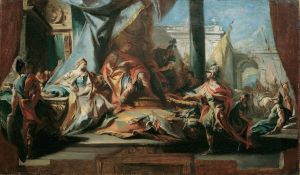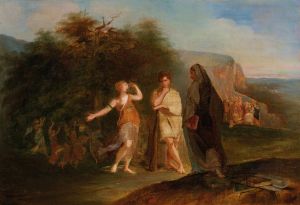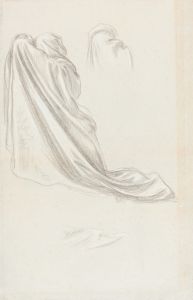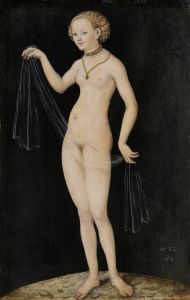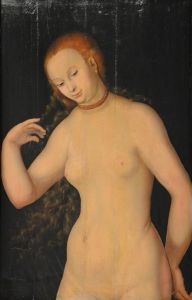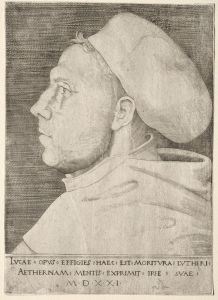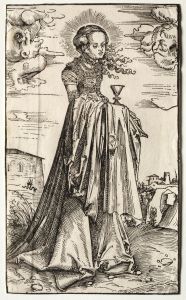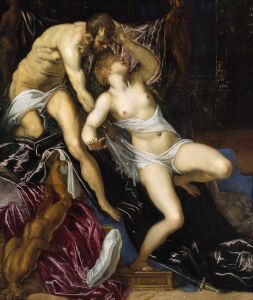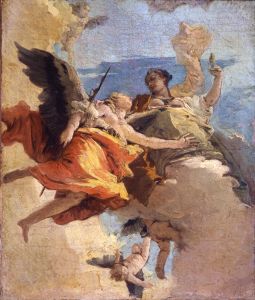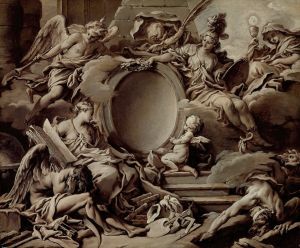
Lucretia
A hand-painted replica of Lucas Cranach the Elder’s masterpiece Lucretia, meticulously crafted by professional artists to capture the true essence of the original. Each piece is created with museum-quality canvas and rare mineral pigments, carefully painted by experienced artists with delicate brushstrokes and rich, layered colors to perfectly recreate the texture of the original artwork. Unlike machine-printed reproductions, this hand-painted version brings the painting to life, infused with the artist’s emotions and skill in every stroke. Whether for personal collection or home decoration, it instantly elevates the artistic atmosphere of any space.
Lucas Cranach the Elder, a prominent German Renaissance painter, created several works depicting the story of Lucretia, a legendary figure from ancient Rome. One of these works, simply titled "Lucretia," showcases Cranach's distinctive style and his ability to convey complex narratives through portraiture.
The painting "Lucretia" by Lucas Cranach the Elder is believed to have been completed around the early 16th century, a period when Cranach was actively producing works that explored both religious and mythological themes. This particular painting is part of a series of works by Cranach that depict Lucretia, a noblewoman from Roman history whose tragic fate played a pivotal role in the transition from the Roman Kingdom to the Roman Republic.
Lucretia's story, as recounted by ancient historians like Livy, tells of her rape by Sextus Tarquinius, the son of the last king of Rome, and her subsequent suicide. Her death became a symbol of personal and political integrity, sparking a revolt that led to the overthrow of the monarchy and the establishment of the Roman Republic. Cranach's depiction of Lucretia captures the moment of her tragic decision, emphasizing themes of virtue, honor, and sacrifice.
In Cranach's "Lucretia," the subject is typically portrayed as a beautiful young woman, often shown in a half-length pose. She holds a dagger, the instrument of her suicide, which serves as a poignant reminder of her story. Cranach's attention to detail is evident in the intricate rendering of Lucretia's clothing and jewelry, which reflect the fashion of Cranach's time rather than ancient Rome, a common practice among Renaissance artists who often depicted historical or mythological figures in contemporary attire.
Cranach's use of color and composition in "Lucretia" is notable. The painting often features a rich palette, with deep reds and golds that draw the viewer's eye to Lucretia's face and the dagger she holds. The background is typically plain or subtly detailed, ensuring that the focus remains on the figure of Lucretia herself. This compositional choice highlights the emotional intensity of the scene, inviting viewers to contemplate the moral and ethical questions raised by Lucretia's story.
Lucas Cranach the Elder was known for his ability to infuse his works with both beauty and narrative depth. His "Lucretia" paintings are no exception, offering a window into the artist's skillful blending of form and content. These works not only reflect Cranach's mastery of portraiture but also his engagement with the humanist themes that were central to the Renaissance.
Cranach's "Lucretia" has been the subject of scholarly interest, with art historians examining the ways in which the painting reflects the cultural and social values of the time. The depiction of Lucretia as a virtuous and tragic figure resonated with Renaissance audiences, who were familiar with classical texts and the moral lessons they imparted.
Today, Cranach's "Lucretia" paintings can be found in various museums and collections, where they continue to be appreciated for their artistic merit and historical significance. These works remain a testament to Cranach's enduring legacy as a painter who skillfully navigated the intersection of art, history, and human emotion.





